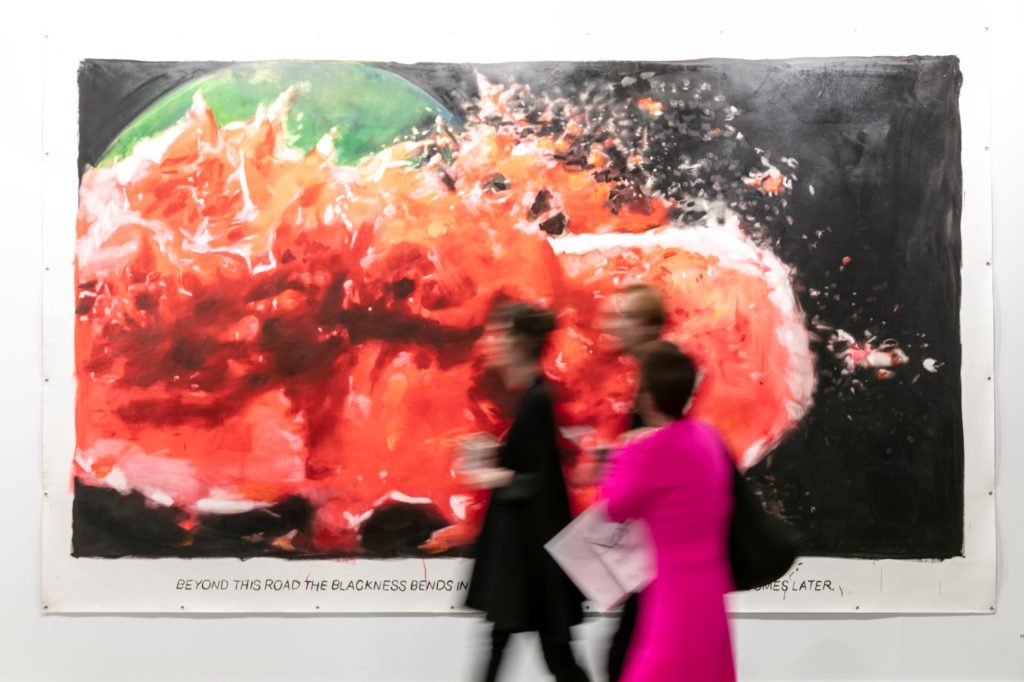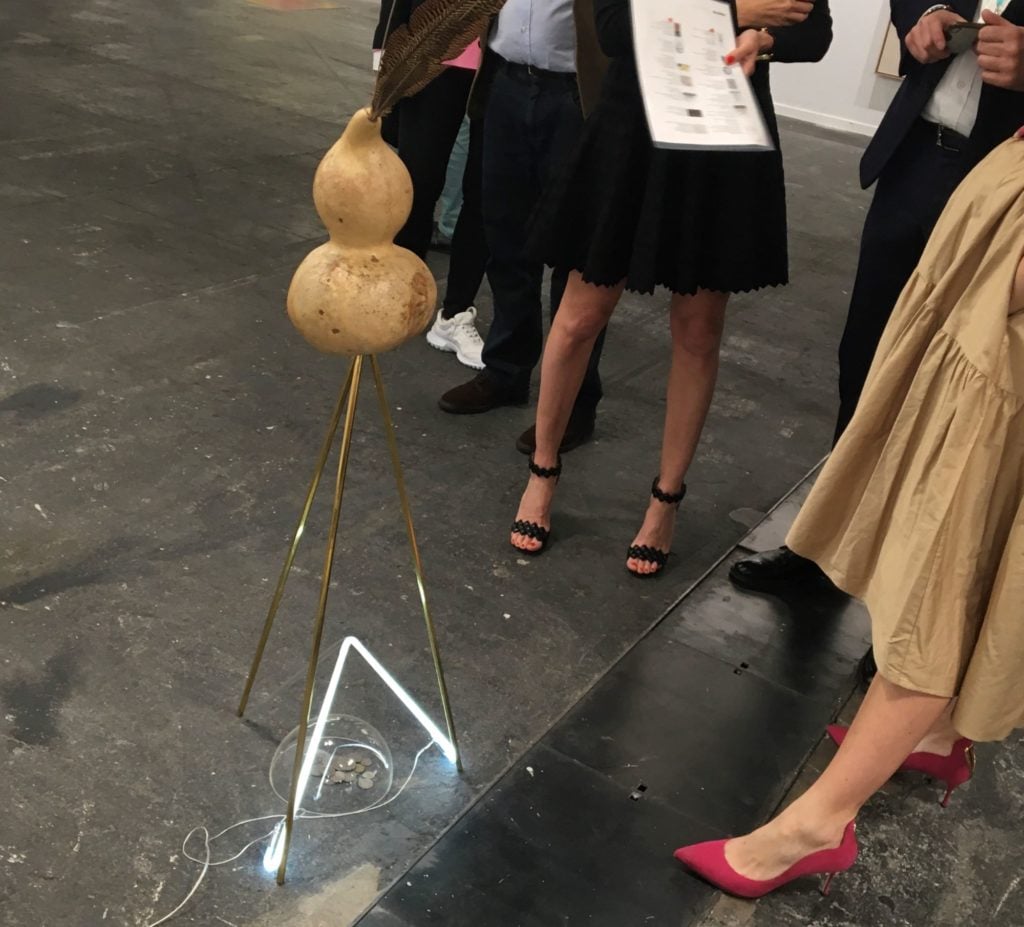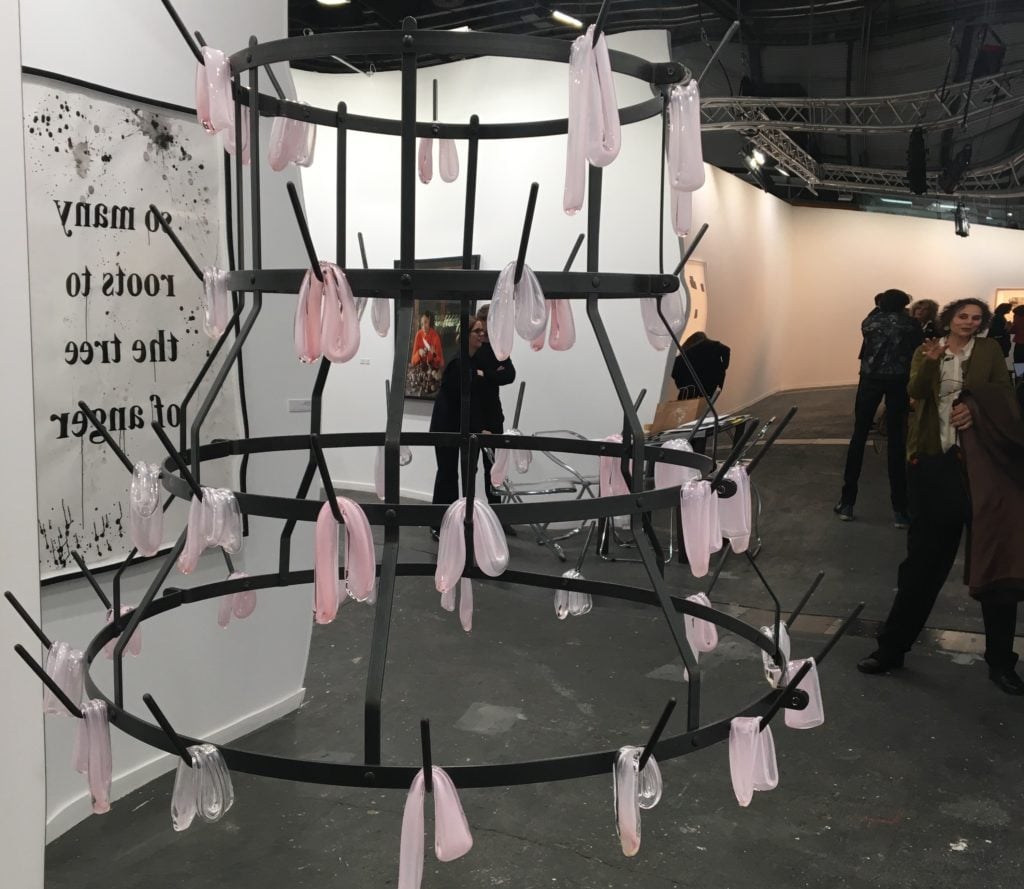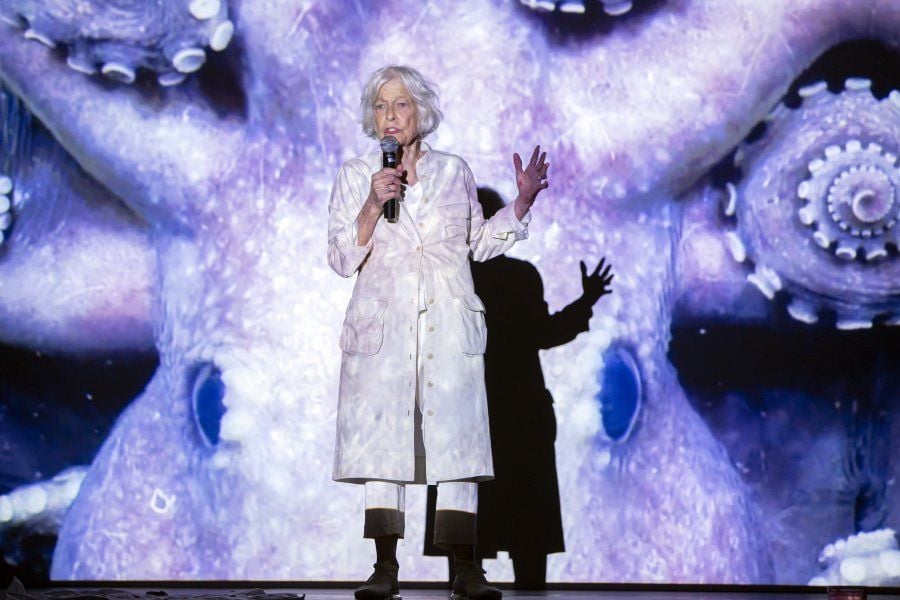Art Fairs
Nervous Chatter About the Coronavirus and Shaky Financial Markets Unsettled Visitors and Dealers at the Opening of Arco Madrid
Dealers and collectors have gathered in the Spanish capital for the 39th edition of the fair.

Dealers and collectors have gathered in the Spanish capital for the 39th edition of the fair.

Javier Pes

Arco Madrid, the Spanish-speaking world’s leading art fair, opened its doors on Wednesday as bad news broke in another part of the art world: Milan’s mega design fair, Salon del Mobile, has been pushed back until June because of a spike in the number of coronavirus cases in Italy.
Adding to the sense of foreboding was a sharp fall in prices on the New York Stock Exchange.
“I thought I might be treated like a plague carrier,” said Carolyn Christov-Bakargiev, with a touch of gallows humor. (Wash your hands throughly to minimize the risk of infection, experts say, and maybe don’t shake too many hands.)
The director of the Castello di Rivoli contemporary art museum outside Turin is in Madrid for the fair, just days after her museum was forced to close because of Italy’s lockdown on regions affected by the virus.
With three new exhibitions shuttered before they could open, including one of Chinese contemporary art, her 2020 program (and budget forecast) have been thrown into doubt. It’s a situation faced by many dealers and collectors at the fair, too.
Emmanuel Perrotin, having just arrived to Madrid from Frieze Los Angeles via New York, says he will be spending more time in Paris these days because of the coronavirus. His spaces in Shanghai, Seoul, and Hong Kong are all shuttered, and work on fitting out a new space in West Kowloon, Hong Kong, has stopped.
Seated aptly on a rocking Iván Argote bench, the gallerist admitted that he was worried particularly about how all the disruptions would impact the artists he represents.
It is a “sad and strange” feeling, Perrotin admitted. But as a veteran of market ups and downs, he is determined to look on the bright side. Asian collectors are still buying, he said, and on the upside, his carbon footprint will be reduced. “I was planning to go to Shanghai and Hong Kong,” Perrotin said. “Now, I will not travel in March.”

Gabriel Rico, Asintomática VII (2019) at Emmanuel Perrotin. Photo by Javier Pes.
Arco Madrid, now in its 39th edition, is where the more than 200 exhibiting gallerists from 30 countries expect to see their Spanish and South American collectors out in force. Italian, French, and globe-trotting Belgian collectors can also be guaranteed. Price points tend to vary from tens of thousands of euros, to a few hundred thousand.
Within hours of the fair opening to what the organizers call “professional visitors” (rather than VIPs), Perrotin had sold an installation by the Mexican artist Gabriel Rico to a Spanish collector in the lower price bracket. (So far, no rogue art critic has taken aim at Rico’s fragile work.)
Meanwhile, the British gallerist Timothy Taylor, who has spaces in London and New York, and who has dipped in and out of Arco Madrid over the years, happily sold a book sculpture by Antoni Tàpies to a Spanish collector for an undisclosed sum on preview day.
(The work was earmarked by a royal minion for a photo-op to take place on Thursday, when the Spanish king and queen are due to visit the fair. Felipe and Letizia are Arco Madrid regulars, which speaks volumes about the event’s status.)
More than 100,000 people are expected to attend the show before it closes on Sunday, but sales appear to have got off to a sedate start, with no big-ticket, early-bird purchases announced by galleries. A 1987 Rauschenberg “glut” sculpture at Thaddaeus Ropac, last seen at Frieze London in October, was on reserve. An Antony Gormley figure went to a Spanish collector for $515,000, which just goes to show how big galleries with name artists can cope with market turbulence better at fairs than mid-sized ones selling works in the tens of thousands.
Elsewhere, a monumental granite sculpture by Eduardo Chillida at Hauser & Wirth, priced at €5 million ($5.4 million), seemed to be more on show than to go (to a collector). The solo booth, tiny by the mega-gallery’s usual standards, seemed designed to announce its partnership with the artist’s estate and its new outpost in Menorca.

Monica Bonvicini, On the Rack (pink) (2019) at Galerie Krinzinger. Photo by Javier Pes.
Thomas Krinzinger, an Arco Madrid stalwart, is presenting works ranging from around €5,000 to €300,000 ($5,400–$33,000), and the lower price points are aimed at newbie collectors.
“There is a big diversity of collectors,” he said. “It’s difficult to sell for a million here.”
A large Duchampian bottle rack, draped with flaccid glass penises mounted on a mirror, by Monica Bonvicini made an eye-catching statement on the booth. The Italian artist, who is based in Berlin, was at the fair before jetting off to Vienna, where she is accepting this year’s Oskar Kokoschka prize—assuming the event is not canceled because of the coronavirus outbreak.
“Coronavirus is on my mind, of course,” said Phillipe Vergne, the former director of MoCA LA, who now leads the Serralves Museum in Porto, Portugal.
The French curator made the trip to Madrid in part because of the strength of Spanish and South American galleries, and the chance to learn about the artists they represent—“such as Tàpies,” he deadpans.
Speaking seriously, he name-checks the Miami-based, Venezuelan artist Rolando Peña as an artist worth rediscovering. Peña has a solo presentation at the Sao Paulo-based Galeria Baró’s booth that includes a series documenting the artist’s 1967 collaboration with Andy Warhol, a wild happening involving paella, a bicycle, and Factory chums at an East Hampton bolt hole.
Peña, who was at the fair, cut a dapper figure. His phallic-looking diagonal column of gold painted oil barrels also makes an impression. It is priced at €70,000 ($76,000).

Ilse Fusková, El Zapallo (The pumpkin) (1982). Image courtesy of waldengallery ©️Ilse Fusková.
As sexy—but in a feminist way—are self-portrait photographs by another veteran artist from South America, this time at Walden Gallery of Buenos Aires. They feature a striking nude image of the Argentine activist-artist Ilse Fusková with sliced-open pumpkin between her legs.
Fusková, who came out as a lesbian in the 1980s and cofounded Buenos Aires’s Pride March, turns 91 this year. Her 1982 work El Zapello (the pumpkin) was among those snapped up by a Spanish Institution. (Another edition was picked up by a Portuguese collector.)

Joan Jonas, Moving Off the Land II (2019), Ocean Space, Chiesa di San Lorenzo, Venice. Performance with Ikue Mori and Francesco Migliaccio. Commissioned by TBA21-Academy. Photo: Moira Ricci. © Joan Jonas.
Another veteran female artist, Joan Jonas, made the trip from the US to restage her aquatic-themed video and performance piece Moving OFF the Land, which had its debut in Venice in 2019.
The memorable evening event in Madrid took place at the Museo del Prado. (Jonas’s exhibition is on view across the street, at the Thyssen-Bornemisza Museum, and is organized by TBA21 Academy.)
The performance ended with a poignant story about the artist and a super smart octopus who lives in an aquarium. The sea creature plays with Jonas’s fingers on screen.
After a long day at a fair where shaking hands didn’t seem the thing to do, considering the circumstances, the simple gesture left a poignant impression.